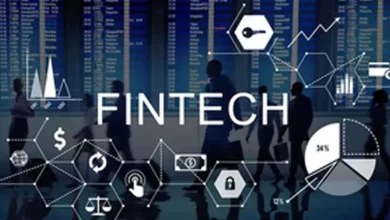Synapse’s Downfall Provides Hard Lessons for Its B2B Partners

A chain is only as strong as its weakest link, as the saying goes. And as the fallout from Synapse’s chaotic bankruptcy continues, containing the impact of its collapse across the financial services and FinTech supply chain ecosystem is top of mind for both the over 100 affected firms and industry observers alike.
That’s because the implosion of Synapse, a middleware firm whose services allowed other businesses to embed banking services into their own offerings, has rattled the prospects of many other startups, while at the same time underscoring just how interdependent the FinTech world is — and how vulnerable it can be to a single point of failure.
Fundamentally, the Synapse story is a B2B story, one with commercial relationships at its center.
Synapse’s troubles potentially began — or were brought to light — when Synapse’s largest client, Mercury, decided to work directly with Evolve, Synapse’s core banking partner, cutting out the need for Synapse as an intermediary.
That set off a chain of events, few of them good, for Synapse’s other clients who relied on the FinTech provider as their connective tissue.
And it highlighted the fact that effective management of third-party risks, as well as the mitigation of single points of failure, is perennially essential for B2B success — no matter the industry a business is operating within.
Read more: Five Things to Watch as Synapse Bankruptcy Impact Shakes Up FinTechs
Synapse Customers Struggle to Navigate Fallout From Collapse
Many FinTechs relied on Synapse as a foundational partner to jumpstart their own growth, and Synapse’s collapse has underscored the cascading effects of what can happen when a core partner of a business’s own core partner moves their business elsewhere.
Along with Mercury, FinTech companies Relay, Cleo, Dave, Yotta and Stilt are all among Synapse clients that have since moved on to other Banking-as-a-Service (BaaS) providers or decided to shift their own product offerings.
Neobank Juno Finance, which provides on-ramp services to the cryptocurrency ecosystem, has been unable to find a new partner post-Synapse’s collapse because its relationship with the crypto sector has kept other banks at bay, per a company blog post.
“This has been incredibly difficult and frustrating for us as well and the entire team who has been caught in the crosshair … between Synapse and Evolve Bank & Trust,” said Juno in the same statement, noting that the company has been provided with “very limited visibility and information.”
Teen-focused banking app Copper, for example, has decided not to find another provider and is instead pivoting to sell its platform as a solution to other banks, while crowd-funding investment marketplace Mainvest is shutting down its business entirely by June 14 due to Synapse’s bankruptcy.
“External factors have led us to the difficult decision to cease Mainvest’s operations and dissolve the company,” the company wrote.
And as many as 100 other companies have found themselves struggling to navigate Synapse’s bankruptcy and collapsed relationship with Evolve. Because Synapse’s architecture was unregulated, it is unlikely that federal officials will step in to help as they did when Silicon Valley Bank (SVB) collapsed last year, leaving any resolution up to a potential settlement or court order, neither of which have happened yet.
Still, it’s not all bad news. After moving on from Synapse, business banking platform Relay announced Wednesday (May 29) it had raised $32.2 million Series B round.
PYMNTS has reached out to both Synapse and Evolve for further comment.
Read more: Managing Third-Party Risks Emerges as Key B2B Issue
When the Middle Falls out of Middleware
PYMNTS Intelligence found this past summer that 65% of banks and credit unions have entered into at least one FinTech partnership in the past three years, with 76% of banks viewing FinTech partnerships as necessary to meeting customer expectations. And a full 95% of banks are focused on using partnerships to enhance their own digital product offerings.
“With complex ecosystems, you have a higher number of partners than you may have historically had” in the past, Larson McNeil, co-head of marketplaces and digital ecosystems at J.P. Morgan Payments, told PYMNTS. This creates new considerations for the corporate treasury function, including management of those partners and counterparty risk.
As McNeil added, “you’ve got to understand your industry and the various players in the ecosystem — and as complexity increases, you’ve got to understand the risk and the opportunities that this creates for the business.”
Many other fintechs use Evolve, Synapse’s bank, to provide their own services. Evolve is one of two partners for Stripe’s Treasury product, an offering that itself powers Shopify Balance. The bank also issues the debit card offered by buy now, pay later (BNPL) company Affirm, as well as acts as the banking service provider and card issuer for teenager-focused banking startup Step.
As Ingo Payments CEO Drew Edwards explained to PYMNTS, “BaaS 1.0 was, in some ways, tech companies focused on enabling tech companies. They would build a cloud core and bring together all kinds of third-party vendors to manage what we would call money mobility. The use cases were varied, and the source of the funds created a lot of risk and exposure as they ramped up fast with many startups, many different industries, all with small banks.”



